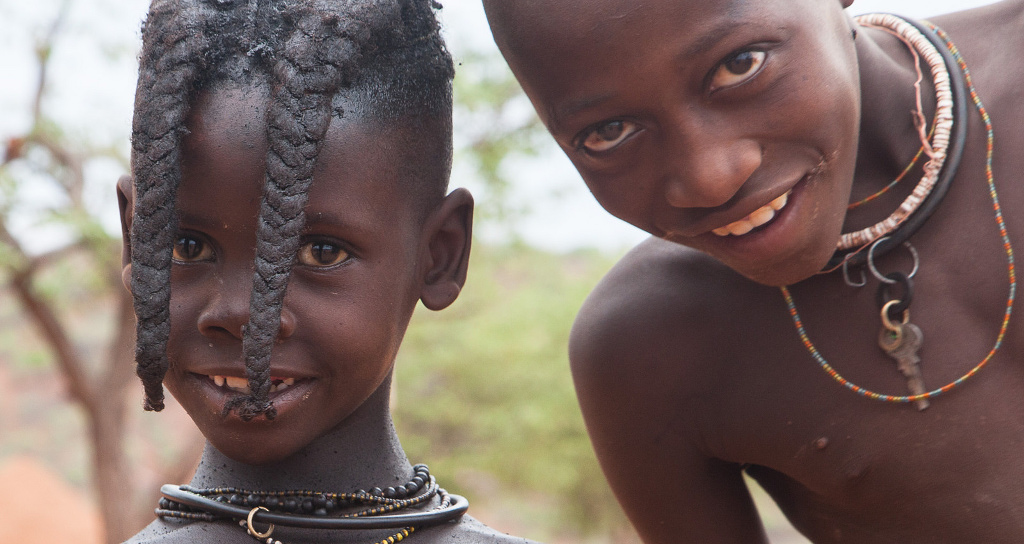The Himba of northwest Namibia
The desolate Kunene region of northwest Namibia is home to a resilient people called the Himba. Hunter-gatherers and pastoralists, the Himba descend from the southward migrating Herero of Angola.
Life for the Himba revolves around the holy fire called Okuruwo. Okuruwo, via the smoke, symbolizes a connection with their ancestors, who are in direct communication with their God Mukuru. The fire burns at the centre of the village and is never allowed to go out and each family has a fire-keeper whose job it is to tend the sacred blaze.
The Himba are a nomadic African tribe and traditionally travel from waterhole to waterhole tending their cattle and goats. Day to day tasks are traditionally split between the sexes with the women doing the hard tasks of carrying water, milking cows, building homes and raising children while the men handle politics and tend livestock. This division even extends to the use of water for bathing which is reserved exclusively for men. Women use herb-smoke from fire to cleanse their pores and maintain personal hygiene.
Interestingly, the traditional clan structure of the Himba is bilateral – evident in only a handful of traditional peoples around the world. Bilateral descent means that every clan member belongs to two clans, that of the mother, and that of the father. Under this unique arrangement, the sons live with the father’s clan as do the wives, however, inheritance passes from the maternal uncle. Living in such a harsh environment, it is believed that this bilateral descent provides a better chance of survival.
The most distinctive characteristic of the Himba is their unique adornment. The distinctive red ochre body paint and elaborate hairstyles have become synonymous with any safari to the Kunene region of Namibia. Hairstyles signify status, age and social standing. From young children with clean-shaven heads to braids and plaits facing forwards and backwards and finally to the Erembe – a sheepskin leather ornament – worn by women who have had children, the often red-ochred hairstyles are both otherworldly and gorgeous.
The red ochre body paint of the Himba – called otijze – is made from butter, animal fat and a naturally occurring earth pigment that contains iron oxide. The Himba women apply this mixture to their skin to protect them from the harsh sun and insect bites, lock in moisture and to beautify themselves. Because of the striking appearance that this red paste creates, the Himba tribe of Namibia has become known the “Red People of Africa”.











